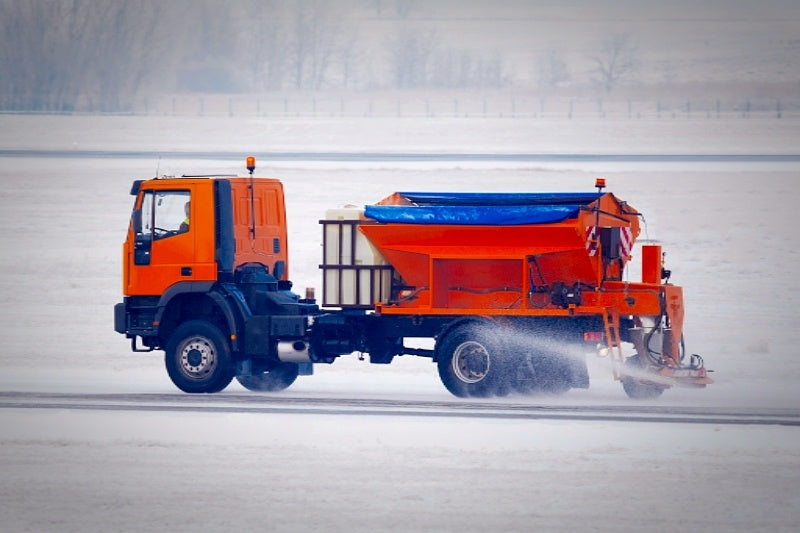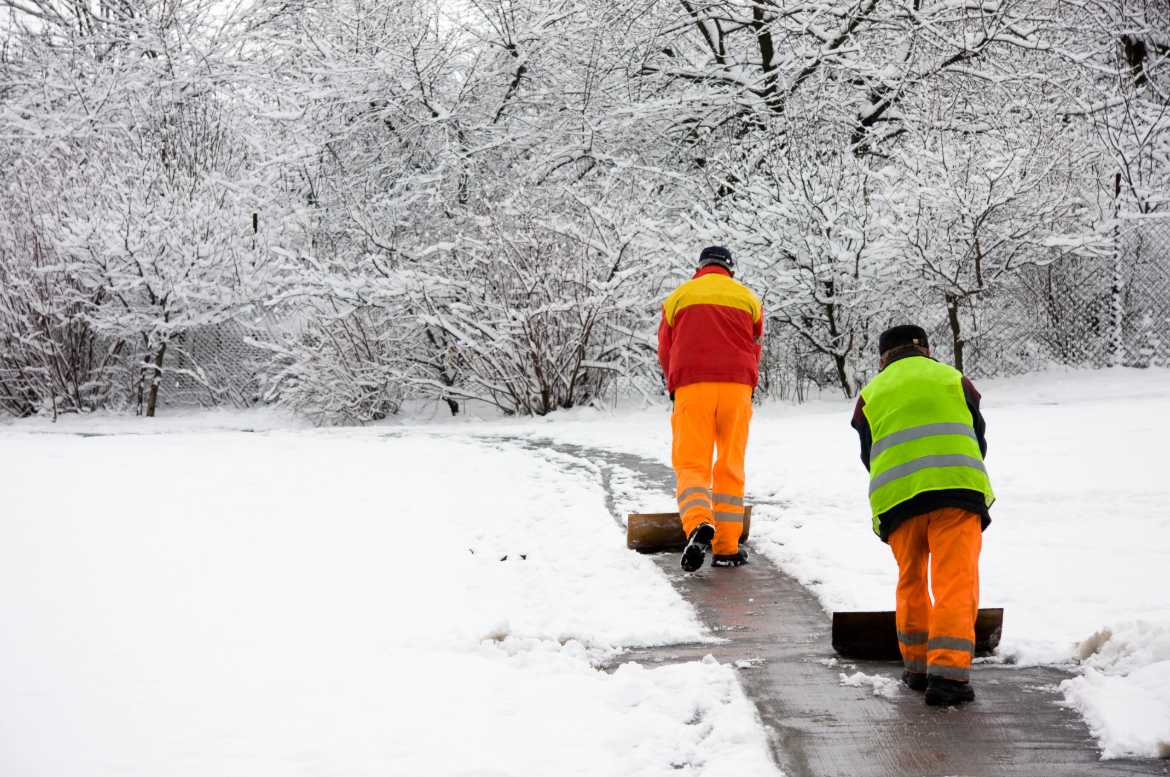
In this interview with Charles Glossop, owner and general manager of Hantho Farms, a snow removal and landscaping company in Rockford, Minnesota, we'll learn all about pre-treatment and the use of brine as an integral part of a snow and ice management plan. Thank you, Charles, for sharing your thoughts with us!
 HeatTrak: Can you share with us briefly your connection to the snow and ice industry?
HeatTrak: Can you share with us briefly your connection to the snow and ice industry?
Charles: My connection started when I was looking to enhance business opportunities in the early 80s. I became interested in being more than a plow jockey, so I was constantly educating myself about industry equipment, chemicals, and how-to’s. I am a founding member of SIMA and a past president and continuing member, as well as an industry consultant to facility managers, airports, and contractors. Today, I also have an actively growing snow business that stands out as a leader in liquids and European salting technology here in Minnesota.
HT: How did pre-treating and brines become such an integral part of your snow and ice management plan?
Charles: We started experimenting with liquids over 25 years ago, using barrels and sump pumps and doing our own blending, making many mistakes along the way. We bought our first commercial brine maker some 12 years ago, but we had been pre-treating and pre-wetting as a regular part of our business plan. Today, we make brine in our own shop facility with multiple storage tanks and custom blends for each storm. We were getting tremendous results—our clients were noticing the difference—and we were reducing the volume of salt applied. Our employees have bought into our use of liquids. It just makes great business and environmental sense.
HT: What assessment of the concrete or pavement is important before deciding on a pre-treatment method?
Charles: We understand pavement temps, we understand how temps vary from concrete to asphalt to bridges to multi-level parking ramps. We look at pavement temps not only at the time of pre-treatment applications, but at what temps are going to be when the event actually arrives. We will either use straight brine or a brine fortified with a calcium on walks, roads, and lots.
HT: Should pre-treatment be built into every snow and ice management plan?
Charles: Great question! My philosophy and best judgement is YES. In many cases, for instance, in a bank location, first treating drive lanes provides a huge benefit. At hospitals, handicapped and high-traffic areas, it’s very beneficial. Example: You have pre-treated a property, done 2 days earlier during the contractor's slow time, at night. It snows at 6:00, heavy traffic, rush hour. The great news is, you have a product on the ground working, making it safer. You don’t need to dispatch salt trucks and try to salt around vehicles and people entering and you have the luxury of coming back in with a plow or an additional salting around 9:30, after rush hour.
HT: What mistakes are people making with pre-treatments?
Charles: They don’t understand the difference between pavement and air temps, they don’t understand how brine works, they don’t understand effective temps for brine, they don’t understand application rates specific to each event, the equipment is not calibrated properly, they use the wrong application equipment. To understand liquids is to use liquids. You are going to make mistakes. Observe, monitor, and adjust.
HT: What are the most important elements of choosing a snow contractor for a facility?
Charles: Visit their facility and look at who and what they are doing. Ask for experience. Ask how they staff. Look at their equipment. Ask for references. Have them visit your property and ask them how they would manage your property. The lowest-cost provider is not always the answer. Ask how they handle a blizzard, 12+ feet (3.6 meters) of snow. Ask about salt inventory (in 2013, many contractors ran out of salt).
HT: What is the future of salt use and how should people be planning for the demand for salt reduction?
Charles: Contractors need to use better application equipment where rates and spread widths can be controlled from the cab of the vehicle. They need to monitor every property separately for the volume of salt being used. Pre-treatments are a necessary part of the overall salt-reduction process. For post-application of salt, a pre-wetting program is essential, not only in reducing the volume of salt used, but also in eliminating the salt bounce factor, reducing damage to the landscape with inaccurate or poor application rates. If we, as contractors, don’t take the initiative to reduce salt use without compromising safety, the EPA will regulate our industry. Let’s be proactive. Today, the equipment industry is investing heavily in new application equipment with the intention of allowing contractors to reduce salt use. I believe reducing salt does not mean reducing price.
More about Hantho Farms
At Hantho Farms in Rockford, Minnesota, Charles Glossop and his son Alex provide commercial snow removal and ice management services and commercial and residential landscaping.
Hantho has been producing brine for over 15 years to use in pre-treatment, applying a brine made from calcium and magnesium chloride directly to the roads and parking lots 24-72 hours prior to a snow and ice event to prevent a bond from forming between the pavement and the snow and ice.

